Last week, we looked at the issue of people using GPS apps such as Google Maps on their smart phones while driving. This week we will look at use of a built-in or stand-alone GPS devices.
Many people use a built-in or stand-alone GPS device. According to the Center’s Study on the Future of Transportation, 21% of respondents said that they use a built-in or stand-alone GPS device like a Garmin or Tom-Tom for directions always or often while driving.
Who is most likely to use such built-in or stand-alone GPS devices always or often? How is this view affected by age, gender, race/ethnicity, region, income, education, political orientation?
Age
The young were somewhat more likely than the old. Twenty-six percent of those aged 18-24 and 35-44, and 24% in the 25 to 34 year old set said they use a built-in or stand-alone GPS device for directions always or often while driving. This compares to 20% of the 55-64 year group, 17% of those aged 65 and above, and 16% of those aged 45-54.
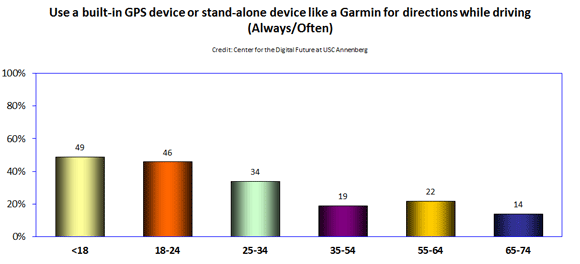
Gender
Males (24%) were more likely than females (19%) to say that they use these devices always or often.
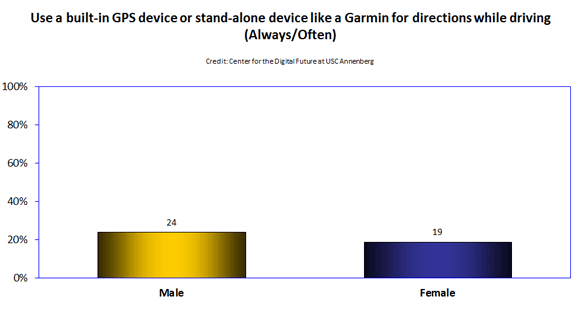
Ethnicity
Asians (33%) and blacks (26%) were somewhat more likely to say they used these built-in or stand-alone devices always or often than were Latinos (22%) and whites (20%).
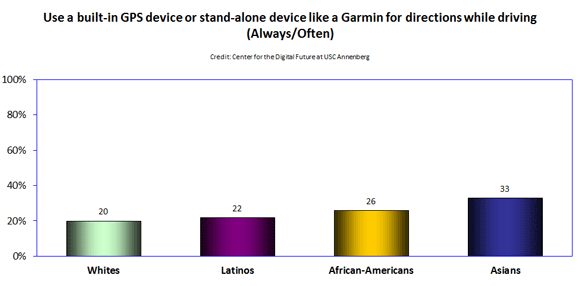
Region
Those in the West (23%) and the South (23%) were somewhat more likely to admit to using a built-in GPS device always or often while driving than were those in the Midwest (19%) and Northeast (19%).
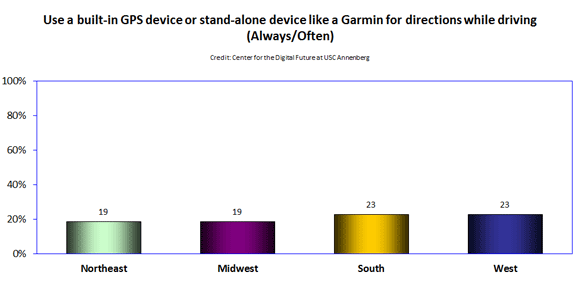
Income
Wealth was another distinguishing factor. Thirty percent of those with a yearly household income of $75,000 or more replied that they used a built-in or stand-alone GPS device for directions always or often. This compares with only 19% of those with yearly household incomes of less than $75,000.
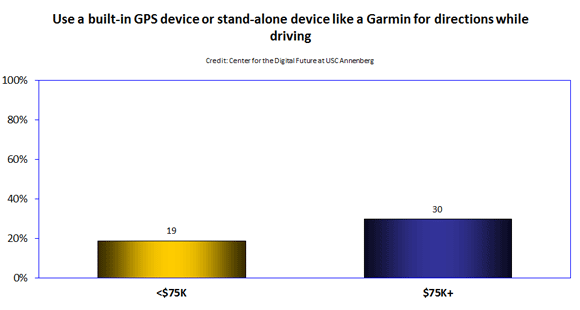
Education
Those with some college education or less (20%) were somewhat less likely than those with a college degree or more (24%) to say that they use such a GPS device always or often.
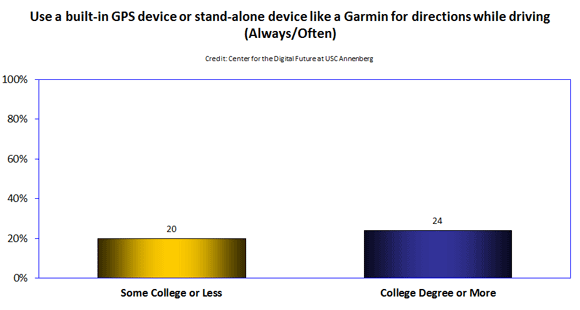
Political orientation
And in regard to political orientation, middle-of-the-roaders (23%) were slightly more likely than conservatives (21%) and liberals (19%) to say that they used such devices to guide them while driving always or often.
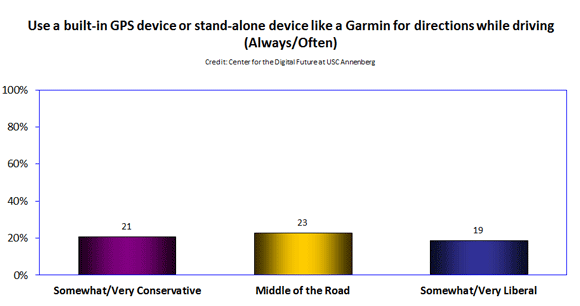
__________
See all Web Insights.
March 11, 2019

